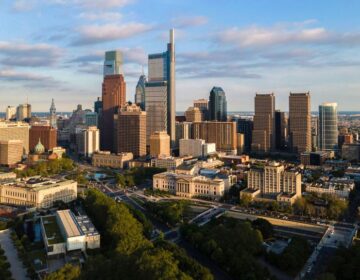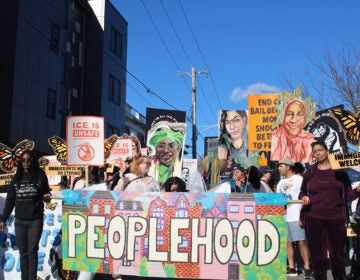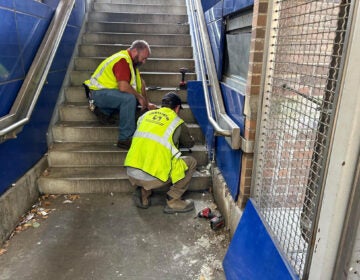‘Lend power to the community’: A 28-foot Afro pick takes over a 52nd St. lot
A touring exhibit is bringing the Afro pick to cities across the U.S. ahead of the November election, to continue conversations about racial injustice.
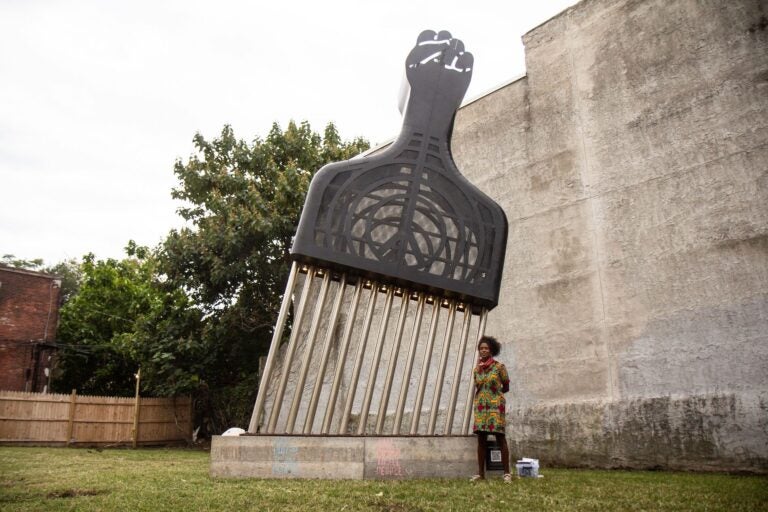
Marsha Reid, executive director of Kindred Arts, with the "All Power to All People" monument at 52nd and Arch streets in West Philadelphia. (Kimberly Paynter/WHYY)
Walking around his hometown neighborhood on West Philadelphia’s 52nd Street, Michael Douglass spotted a symbol of Black culture: a 28-foot Afro pick displayed in a grassy lot.
“When I saw it, I thought it felt good to see something that represents Black people in a Black neighborhood,” said Douglass, who now lives in Los Angeles but is currently visiting family. “It’s inspiring.”
“All Power to All People,” by conceptual artist Hank Willis Thomas, may look familiar to those who followed the city’s Monument Lab projects of 2017. A smaller, 8-foot version of the Afro pick and Black Power fist by Thomas was displayed temporarily then across from City Hall. That version now has a permanent home at the Pennsylvania Academy of the Fine Arts.
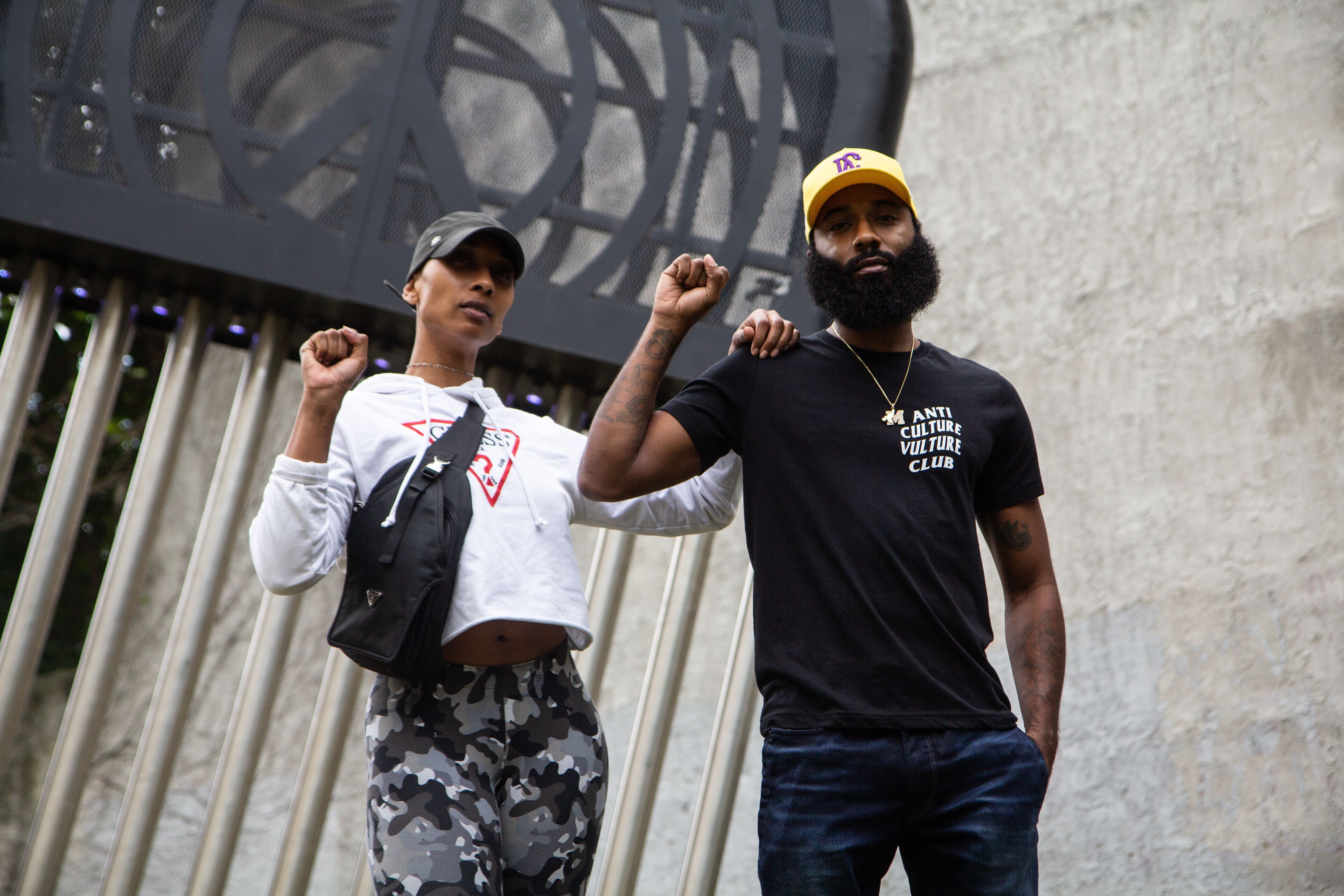
The latest project by Thomas is part of a touring collection called Monumental from arts nonprofit Kindred Arts. A collaboration with the Philadelphia agency Little Giant Creative helped bring it to West Philly. The exhibit is bringing the Afro pick to cities across the country ahead of the November presidential election, to continue growing conversations over racial injustice and inequity. Recently, the artwork called both Atlanta and Washington, D.C., home.
The Afro pick will move from its current spot at 52nd and Arch streets throughout Philadelphia until after the election. Two other projects from the Monumental collection, being kept under wraps to foster the element of surprise, will be on display in the city soon.
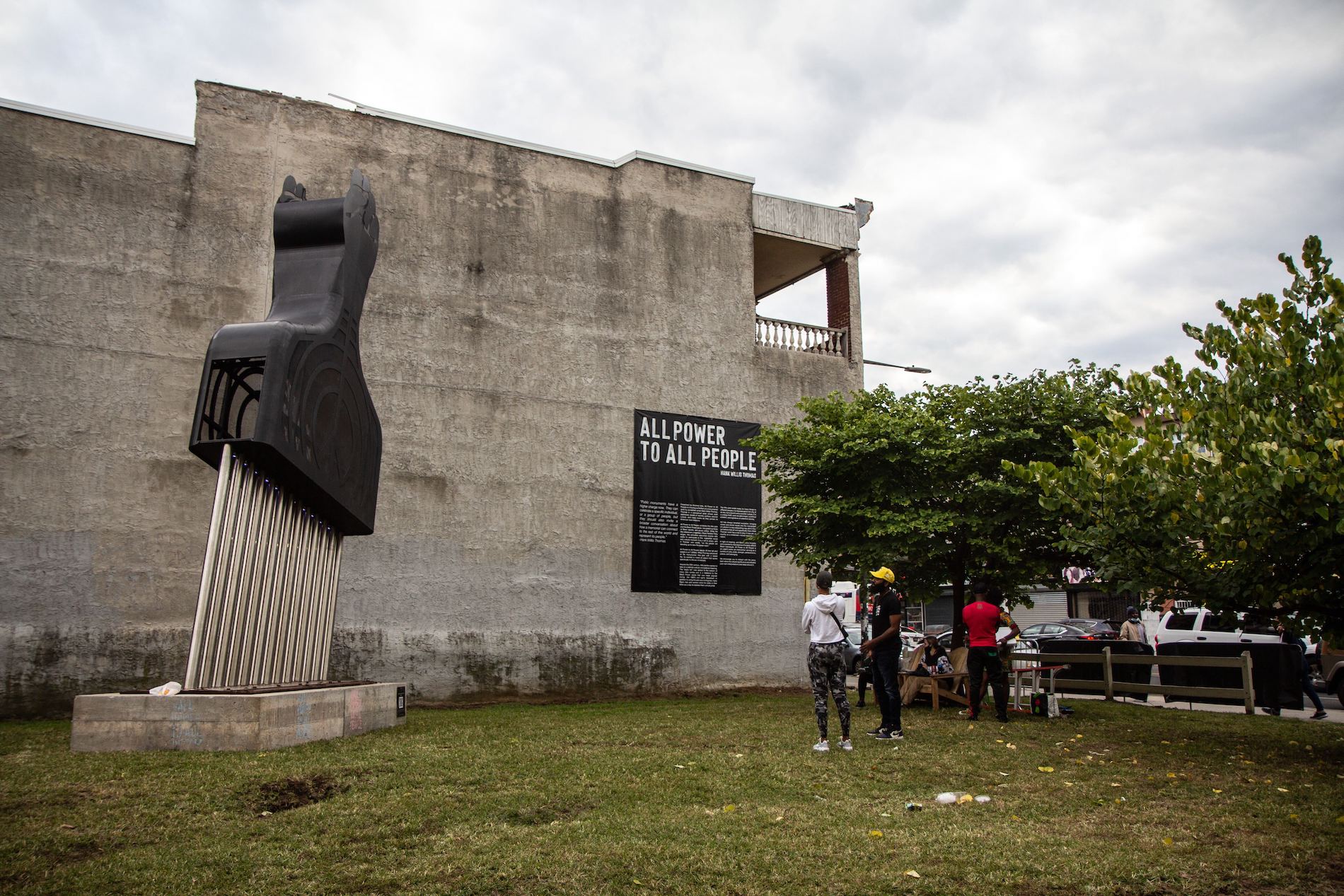
Kindred Arts executive director Marsha Reid said having something like Thomas’ work on display in West Philly — a neighborhood known for its murals to Black history and culture but lacking in monuments — helps create an important representation.
“Symbols matter,” Reid said. “We lend power to the community.”
And yes, she said, this is a conversation about Confederate monuments.
“We can tear them down, but we can also give great examples of inclusive, representative art that honors and respects everybody in its society,” Reid added.
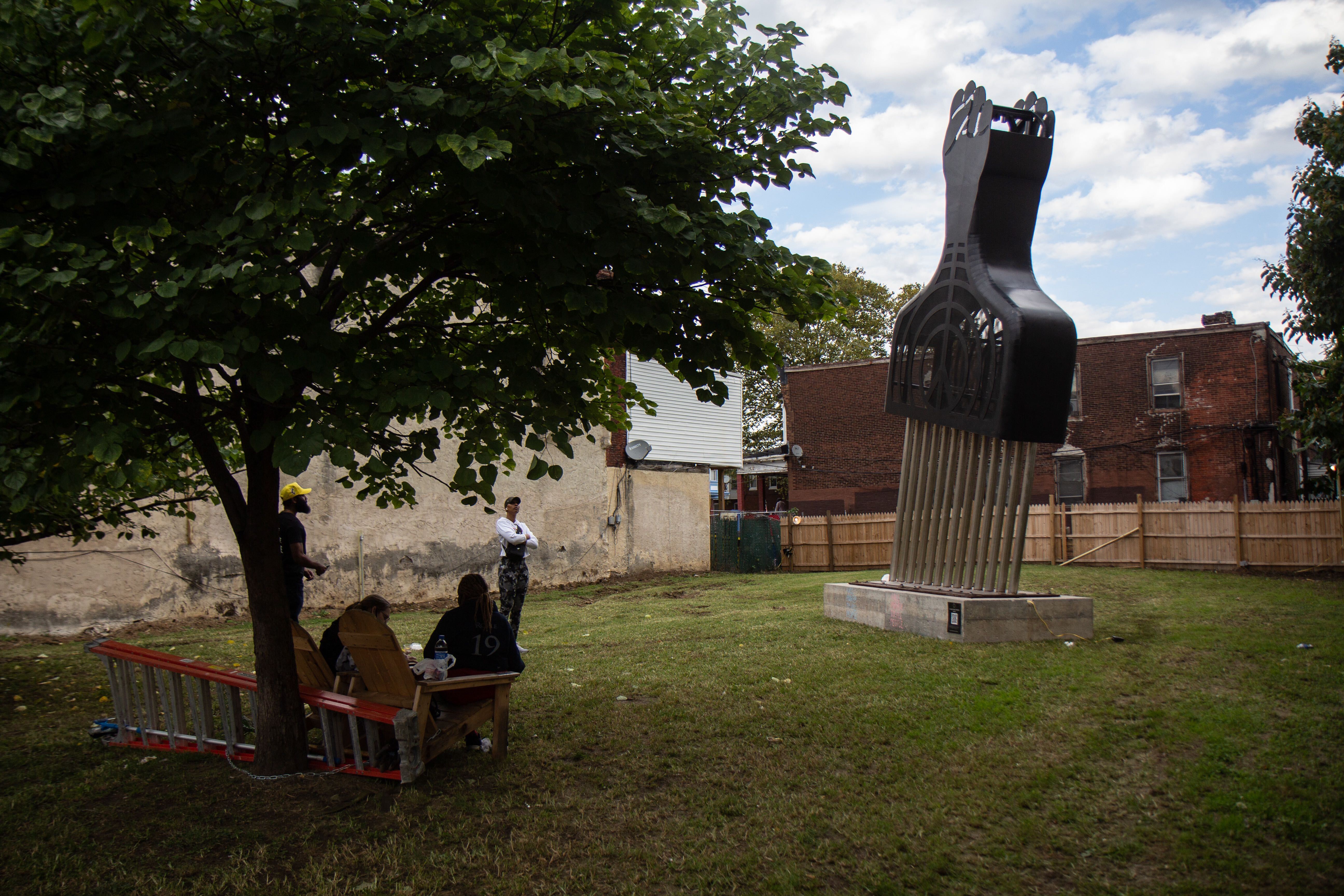
While scouting locations for the project, she was urged to check out 52nd Street by Tayyib Smith of Little Giant Creative, who is working to open an entrepreneurial hub along the West Philly commercial corridor.
As someone who identifies as British West Indian, Reid said driving along the bustling thoroughfare, with its many Black-owned businesses and cultural organizations, “felt like home.”
“I was like, this is beautiful. This is beauty just waiting to be activated,” Reid said.
The original plan for the Monumental touring project was to travel to eight cities, particularly honing in on swing states where they could potentially effect the most change by meeting people where they are with art.
But as with many things, the coronavirus pandemic upended some of those plans. Still, the project remains connected to its political and cultural symbolism, and Reid said they plan to go forward with voter registration drives in front of the artworks.
Beyond political engagement, Reid added that she hopes it sparks conversations about who gets access to, and feels culturally affirmed, in Philadelphia’s public spaces when there are countless works dedicated to Benjamin Franklin and only one statue honoring a Black man — Octavius Catto. The Catto statue was erected only in 2016.
“Who are those gatekeepers … and should we be revising the way we program public spaces and the microaggressions we’ve set up over the last 30 years to keep us out of them?” Reid said. “Spiky benches, policing, cameras everywhere … You are policing community out of the community. We have to get those spaces back and create them for ourselves.”
Walking around 52nd Street, Lynda Williams and Brenda Rolle, who live and work in the neighborhood respectively, stumbled upon the monumental Afro pick. They spent an hour sitting in nearby chairs, soaking in the artwork.
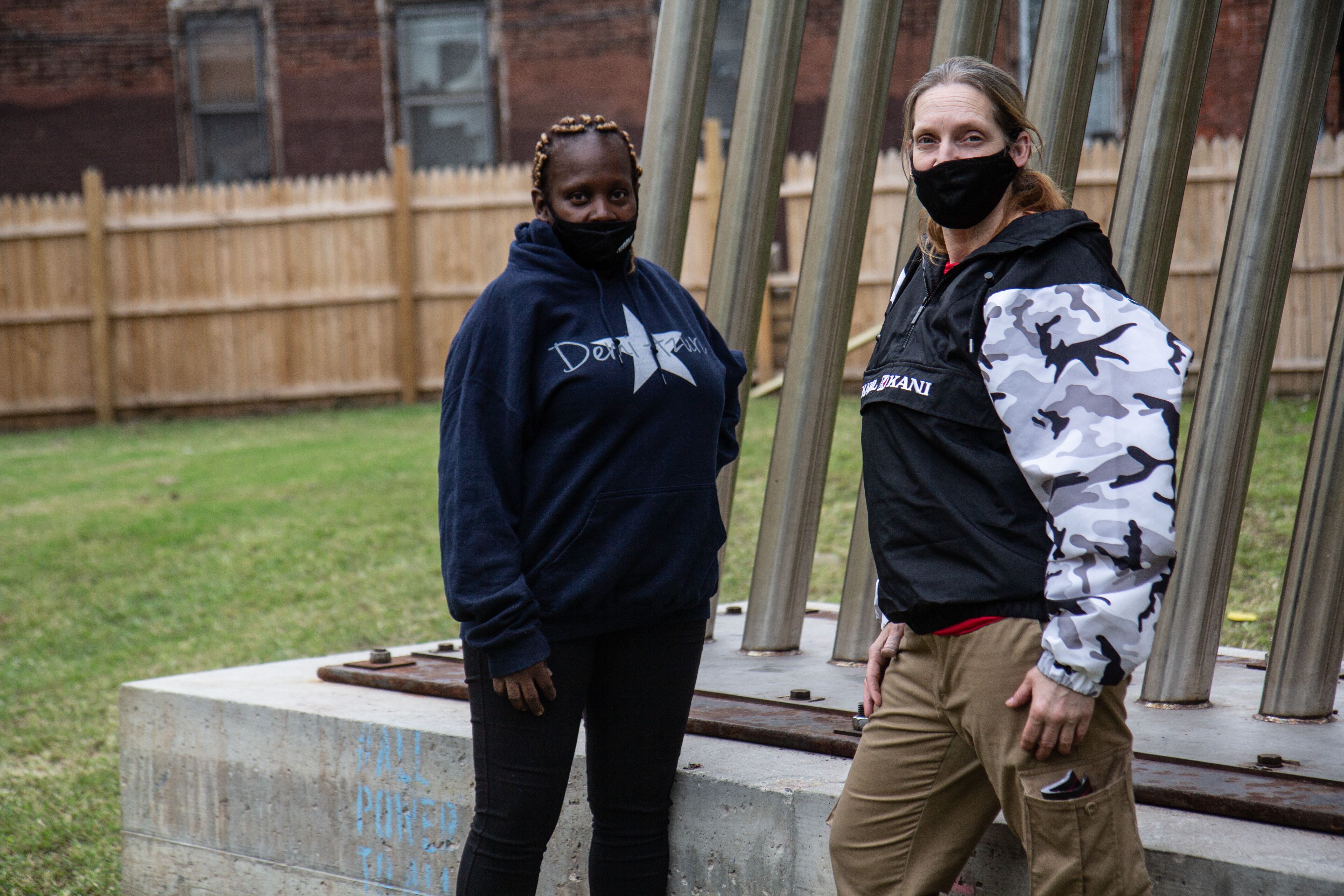
“It needs to stay, not temporary,” Williams said. “We need more Black artist representation.”

Subscribe to PlanPhilly
WHYY is your source for fact-based, in-depth journalism and information. As a nonprofit organization, we rely on financial support from readers like you. Please give today.



